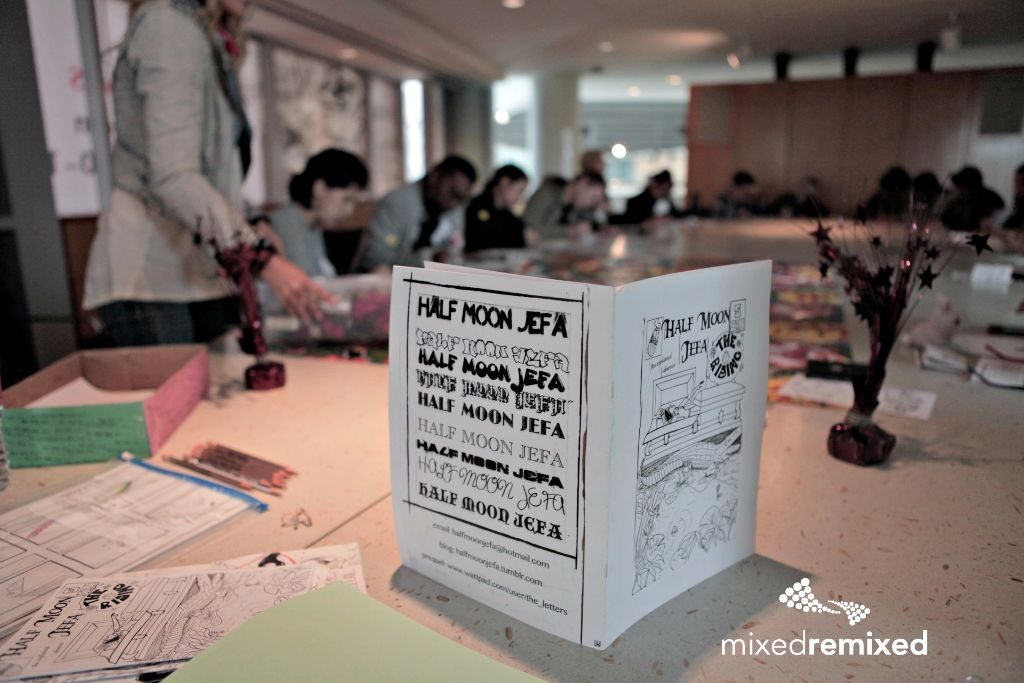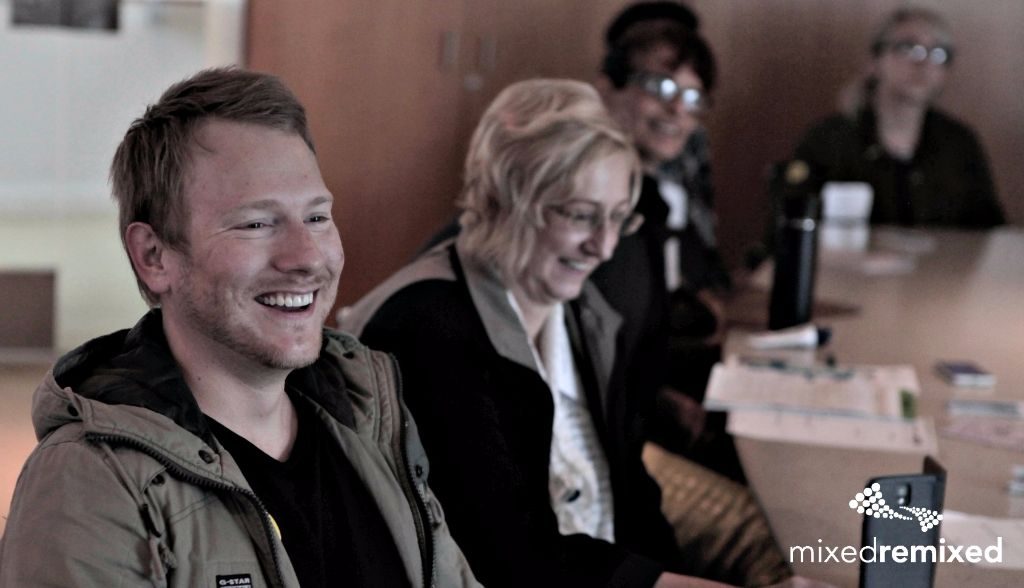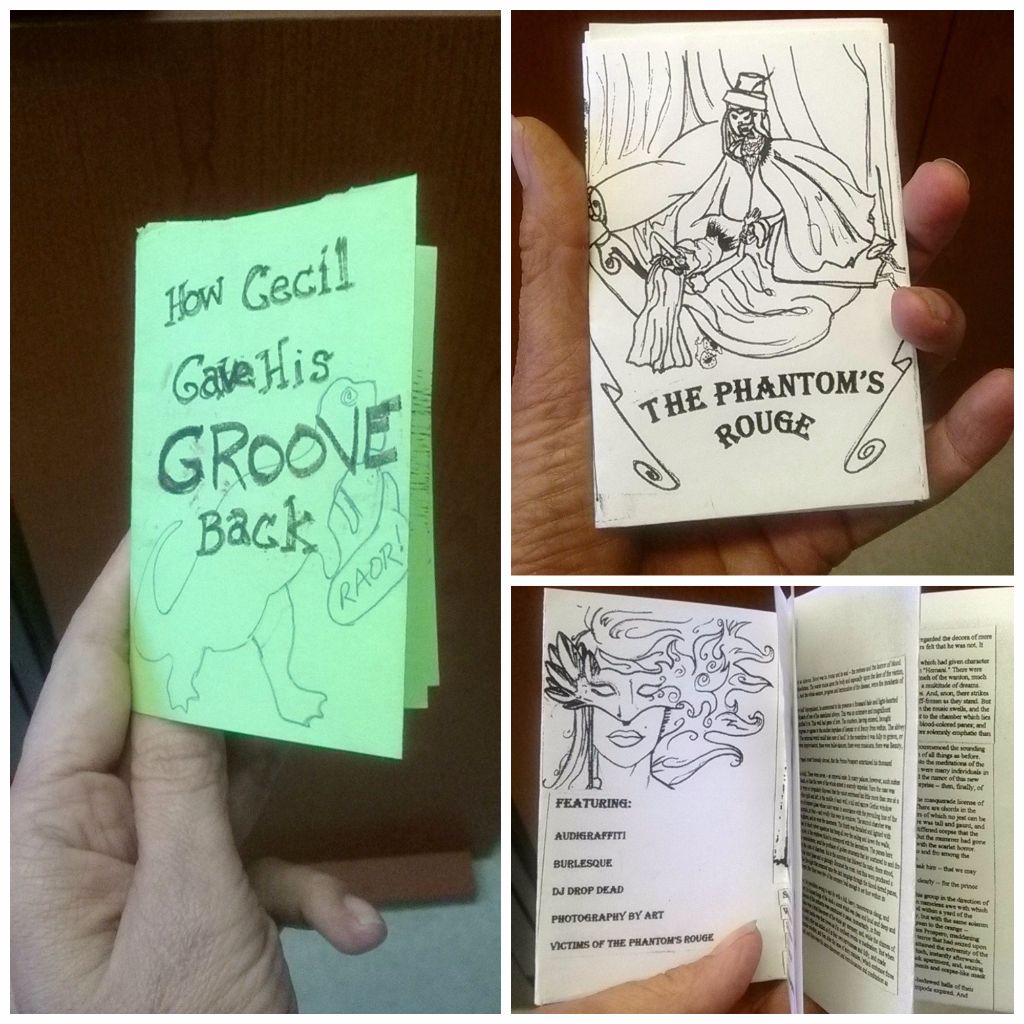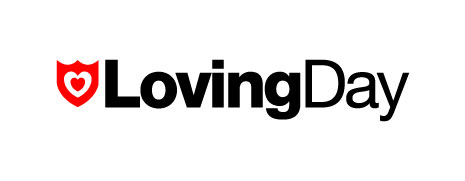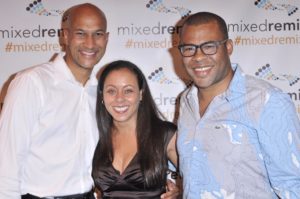Multiracial Americans Gather to Tell Their Stories To Create Spaces for Healing & Activism
By Michele Beller
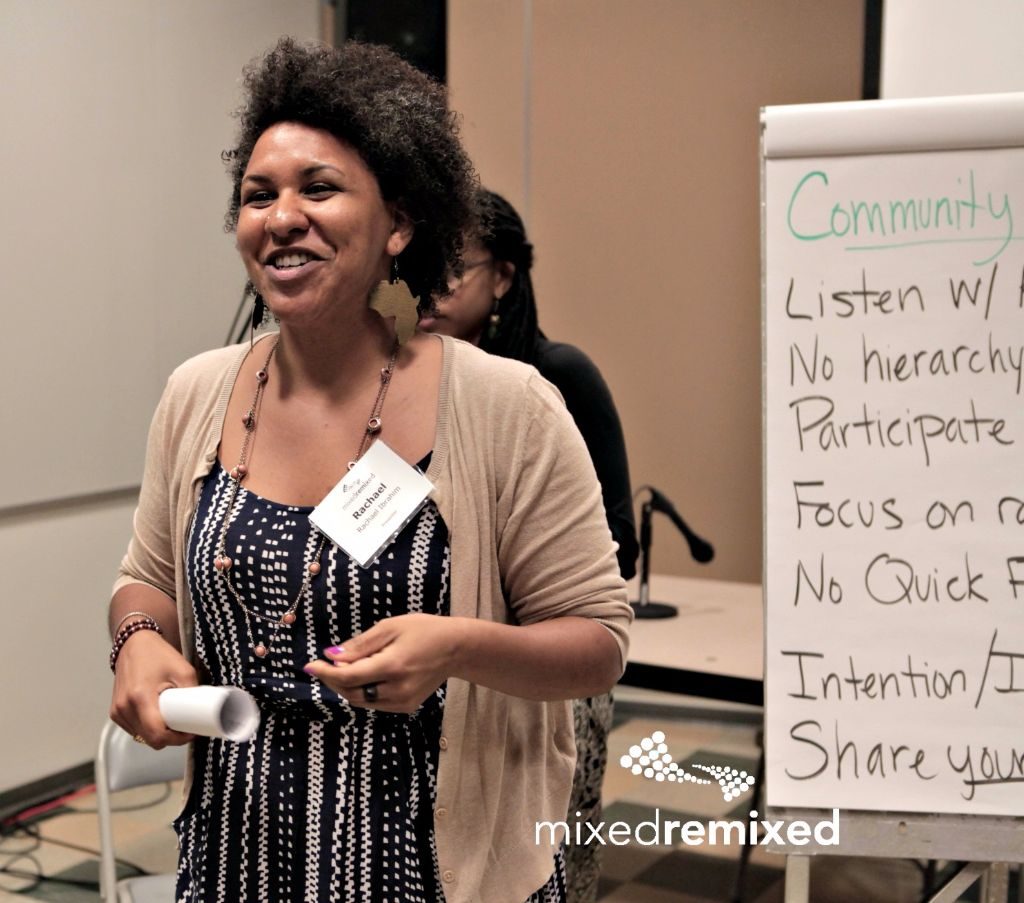 One of the most dynamic workshops of my day at the 2016 Mixed Remixed Festival this year was the Storytelling: Art and Activism Unite workshop with Amity Paye and Rachel Ibrahim, MSW. “Storytelling is a powerful, historical, cultural practice that has the ability to create social change,” they pointed out, and “as mixed race people, we have many stories to tell.” Amity, who works in communications at a labor union and has written extensively for various publications including The Nation, NBC, and The Root, and Rachel, a community organizer, trainer and artist, are a dynamic duo. Together they organize and facilitate conversations such as this across the U.S., through many venues.
One of the most dynamic workshops of my day at the 2016 Mixed Remixed Festival this year was the Storytelling: Art and Activism Unite workshop with Amity Paye and Rachel Ibrahim, MSW. “Storytelling is a powerful, historical, cultural practice that has the ability to create social change,” they pointed out, and “as mixed race people, we have many stories to tell.” Amity, who works in communications at a labor union and has written extensively for various publications including The Nation, NBC, and The Root, and Rachel, a community organizer, trainer and artist, are a dynamic duo. Together they organize and facilitate conversations such as this across the U.S., through many venues.
This day, we would be working not just on sharing our multiracial stories but on sharing them in a way that would build accountability, interrupt oppression, address anti-blackness, and, importantly, creating spaces for healing. In doing this, we would help lift up strategies to strengthen communities and promote social justice and racial equity, the pair explained. As they discussed the packed agenda for the next hour, attendees in the large group looked eager to get started.
Coming Together to Share as a Mixed Community
The first order of business was a Community Agreement to help build a team/community, and after all agreed, the doors would be shut and we’d be ready to dig in. The contents of the Agreement are worth noting, and something good to remember for future.
First on the Agreement: “Listen with respect.” Here, Rachael paused to give us a fun puzzle to solve: “What else does listen spell when the letters are rearranged?” she asked. (I got this! I got this! NPR’s Puzzlemaster Will Shortz would be proud!) Answer: Silent! What a good reminder of how to listen—silence your inner dialogue as you listen to others.
Number two on the list was “No hierarchy of oppression” (whose oppression is worse that another’s? Answer: Not applicable—who is to judge?).
Third on the Agreement was “Participate” (move up or move back, depending on your habit of jumping in or sitting back.) Here, Rachael asked for a show of hands: first, those who are quick to jump in and comment or participate. Second, those who would prefer to sit back and observe rather than participate were asked to raise their hands. As the second group identified themselves, Rachael grinned and quipped, “Wonderful; we’ll call on you first.” The entire room broke out in laughter. She was kidding, of course, but you get an idea of what dynamic workshop leaders these two are and how skilled they are at putting everyone at ease.
 Next on the list was: “The focus today stays on racism in the U.S.–this mostly to narrow it down a bit accounting for the short time we had for the workshop. There are so many isms and so many issues, it can be overwhelming. And this point is a perfect segue way to the next item on the list: “Recognition that there is no ‘quick fix.’” (Whew! Pressure’s off! We wouldn’t have to solve all the country’s problems in this coming hour!).
Next on the list was: “The focus today stays on racism in the U.S.–this mostly to narrow it down a bit accounting for the short time we had for the workshop. There are so many isms and so many issues, it can be overwhelming. And this point is a perfect segue way to the next item on the list: “Recognition that there is no ‘quick fix.’” (Whew! Pressure’s off! We wouldn’t have to solve all the country’s problems in this coming hour!).
Another important item was “Intention/Impact.” Here, the idea is that we all agree we are gathered for the workshop with good intentions, to not cause harm or say something offensive to someone else, and yet sometimes we do that anyway. Lastly, we agreed to keep this workshop for sharing our story and not someone else’s.
Once we all agreed, the door was closed and attendees pulled their chairs in closer, ready to roll up their sleeves. It was at this moment that one witty person remarked, “Oh, so this won’t be a craft workshop?” Again, laughter ensued and it was clear that the group was highly engaged and excited to start.
The Wonderful Thing About Mixed Race and Multiracial Americans’ Stories
After breaking into a rotation of small groups and meeting/greeting each other with brief introductions for about five minutes, we gathered back together as a whole group and introduced ourselves to the group, with a few of us sharing more about our stories—who we were. One of the things that struck me and made me tingle with joy is how wonderfully beautiful, fascinating, and diverse “mixed race” can be— multiracial, hapa, biracial, blasian, mixed race adoption, and so much more! And these labels can’t come close to revealing each unique story. What a handsome group of people, I thought at that moment. I’m so glad I’m here.
Rachael discussed the multiple ways we can tell our stories: written, oral tradition, music, and art, for example. One of her comments really struck me: “We use storytelling as a way of finding, ‘Who are my people?’” she said. I know that feeling all too well! We all were nodding our heads in recognition as she told her own unique story of who she was and of trying to figure out who her people were.
Mingle Huddle, Mixed Race Style
Our next activity sounds fun even just by its name: Mingle Huddle! Here, we once again broke into smaller groups, in two alternating parts; first, we were instructed to mingle around the room like we were at a cocktail party. To facilitate the “mingle” mood, the pair played upbeat music, and the room literally buzzed. In the middle of our mingling, they would call out, “Five!” at which we then went into “huddle” mode, where we huddled in groups of five for structured storytelling based on a prompt.
Amity and Rachael gave us a total of four prompts to work from, each one timed (three minutes!), and they were delicious prompts: First: Where is home/Who are your people/Where are your people from? You can just imagine the fascinating stories that came out of that prompt!
The second prompt was: What is an aspect of your culture that is sustaining to you? (For me, the tradition of the Caribbean rice and peas dish and fried plantains every Christmas, imported from my West Indian grandfather’s family—mandatory!). The third prompt was: What are ways you have addresses/interacted with racism in your life? How are these different/unique because of your mixed heritage? (You can just imagine the stories that came out of that one!) Our final prompt was perfect for coming to a close: How can our stories unlock opportunities for healing and change?
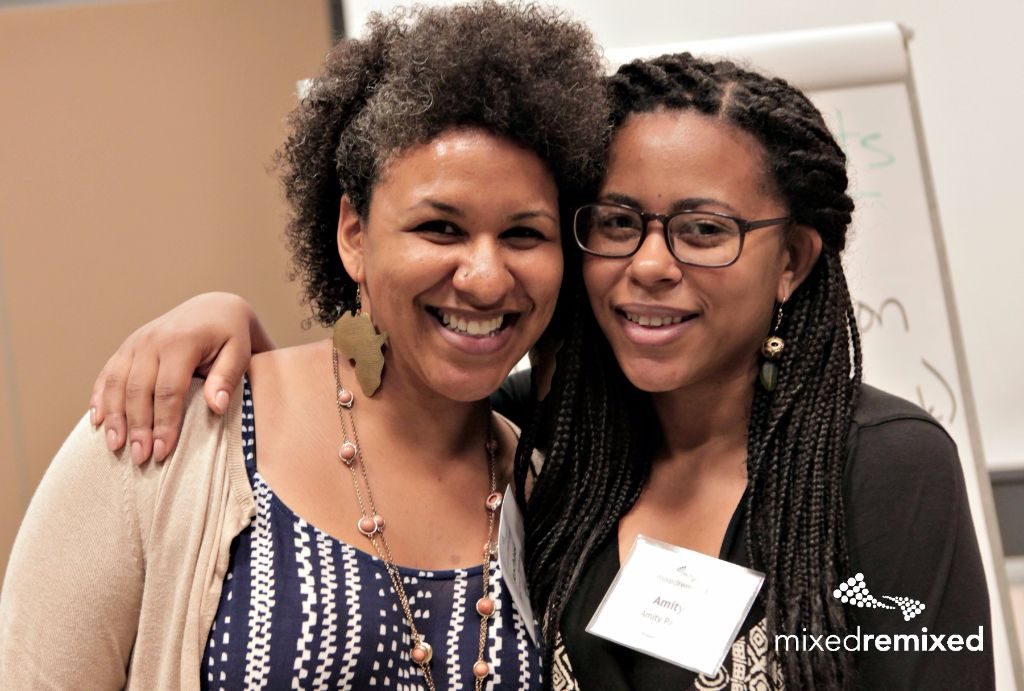 We wound down the workshop with the sharing of our findings and insights from the mingle huddle activity. Rachael noted that being able to share stories is important first because of its ability to build the sense of community from which we can work, and is actually a form of activism itself: the act of holding space for people and allowing for the complexity of their stories without having to interject or tell them how their story is similar/dissimilar to ours.
We wound down the workshop with the sharing of our findings and insights from the mingle huddle activity. Rachael noted that being able to share stories is important first because of its ability to build the sense of community from which we can work, and is actually a form of activism itself: the act of holding space for people and allowing for the complexity of their stories without having to interject or tell them how their story is similar/dissimilar to ours.
We can’t organize against racism, Rachael pointed out, if we are not in relationship to each other, which is why knowing how to listen and create safe spaces for each other is crucial. We closed on a reflection of how our stories shared today can affect communities and offer opportunities of healing. By the time the group was filing out of the room, budding friendships had been forged and a strong sense of community hung thick in the air. It never fails, Amity said, that through creating this space and sharing stories, people connect in amazing ways, sort of that “Oh my god—I can’t believe I found you!” moment. And I concur—I can’t believe I found this workshop.
Note: If you’d love to learn more about their amazing work, while Amity and Rachael do not presently have websites, any requests for consultation or training can be sent to Rachael at assist.rachaelibrahim@gmail.com
~Michele Beller, Festival Blogger, https://randomaunt.wordpress.com/




